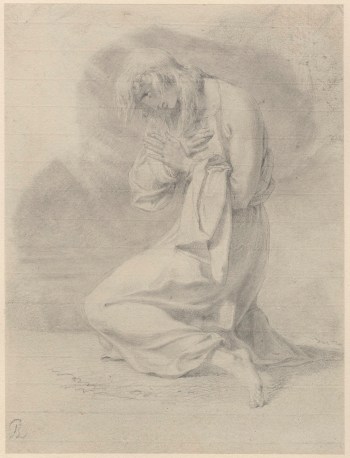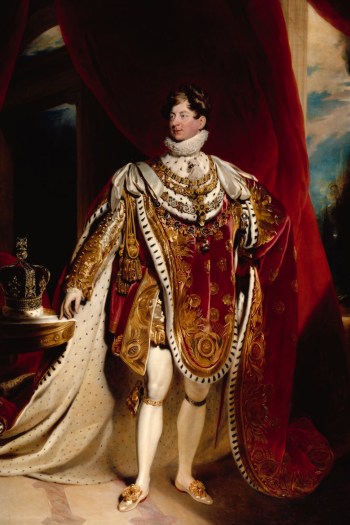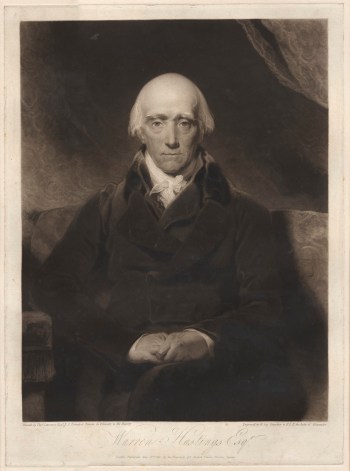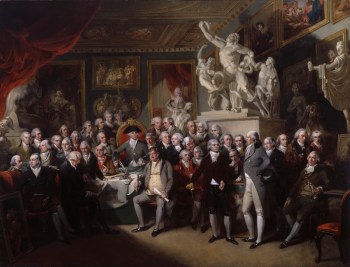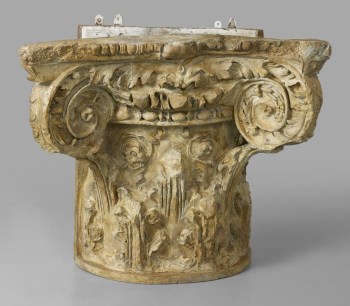Sir Thomas Lawrence PRA (1769 - 1830)
RA Collection: People and Organisations
Sir Thomas Lawrence was a child prodigy who became the leading British portrait painter of his generation and was elected President of the Royal Academy in 1820.
Born in Bristol in 1769, Lawrence entered the Royal Academy Schools aged 18 and was elected a Royal Academician just six years later. In 1792, he succeeded the Royal Academy’s founder, Joshua Reynolds, as the King’s official Painter-in-Ordinary, completing several portraits of the monarch. Lawrence’s flattering and glamorous portraits proved highly popular and, from this period onwards, he was kept busy with a constant stream of commissions from the rich and famous.
In 1814, Lawrence was given a prestigious commission by the Prince Regent to paint the allied military leaders, diplomats and heads of state involved in the defeat of Napoleon, including King Friedrich Wilhelm of Prussia, Tsar Alexander I of Russia and the Duke of Wellington. The initial commission proved slightly premature when Napoleon returned from exile on the island of Elba but it continued in earnest after the French leader’s defeat at the Battle of Waterloo in 1815. Lawrence’s paintings now hang in the Waterloo Chamber at Windsor Castle. In official recognition of his service he was knighted in 1815. In 1820 he was elected President of the Royal Academy, a post he held until his death.
Lawrence never married but was the subject of much gossip in his day. He was romantically linked with many women, including both Sally and Maria Siddons, daughters of the famous actress Sarah Siddons.
Despite his fame and wealthy clientele, Lawrence’s financial affairs, were very unstable. Although he did not lead a particularly lavish lifestyle and was known to be a hard worker, Lawrence spent much of his life in debt. He is thought to have been generous to his relatives and bad at keeping accounts but some of his debts were undoubtedly due to his activities as an art collector. Lawrence built up an unrivalled collection of Old Masters drawings including works by Michelangelo and Raphael; many of which are now in the British Museum and the Ashmolean Museum, Oxford. In 1830 at the age of 60, Lawrence died insolvent. His treasured collection was sold off piecemeal—buyers included the Royal Academy, which purchased his collection of Italian architectural casts.
Profile
Born: 13 April 1769 in Bristol, Avon, England, United Kingdom
Died: 7 January 1830
Nationality: British
RA Schools student from 13 September 1787
Elected ARA: 10 November 1791
Elected RA: 10 February 1794
President from: 1820 - 1830
Gender: Male
Preferred media: Painting
Works by Sir Thomas Lawrence in the RA Collection
11 results
-
![Sir Thomas Lawrence PRA, Sketch of a woman supporting a bearded old man]()
Sir Thomas Lawrence PRA
Sketch of a woman supporting a bearded old man
Pencil on laid paper
-
![Sir Thomas Lawrence PRA, Sheet of sketches including a female head in profile]()
Sir Thomas Lawrence PRA
Sheet of sketches including a female head in profile, by 1818
Pen and brown ink on laid paper
-
![Sir Thomas Lawrence PRA, Head of a bearded old man]()
Sir Thomas Lawrence PRA
Head of a bearded old man
Pencil on grey laid paper
-
![Sir Thomas Lawrence PRA, Seated woman viewed from the back]()
Sir Thomas Lawrence PRA
Seated woman viewed from the back, 1814 or after
Pen and ink on wove paper
-
![Sir Thomas Lawrence PRA, Portrait sketch of James Wright]()
Sir Thomas Lawrence PRA
Portrait sketch of James Wright, after 1811
Pencil on wove paper
-
![Sir Thomas Lawrence PRA, Kneeling figure]()
Sir Thomas Lawrence PRA
Kneeling figure
Pencil and smudged black chalk on laid paper
-
![Sir Thomas Lawrence PRA, Preparatory drawing for 'Satan Summoning his Legions']()
Sir Thomas Lawrence PRA
Preparatory drawing for 'Satan Summoning his Legions', c. 1796 - 1797
Pencil on wove paper
-
![Sir Thomas Lawrence PRA, A Gipsy Girl]()
Sir Thomas Lawrence PRA
A Gipsy Girl, 1794
Oil on canvas
-
![Sir Thomas Lawrence PRA, Satan summoning his Legions]()
Sir Thomas Lawrence PRA
Satan summoning his Legions, 1796-1797
Oil on canvas
-
![Sir Thomas Lawrence PRA, Self-portrait of Sir Thomas Lawrence P.R.A.]()
Sir Thomas Lawrence PRA
Self-portrait of Sir Thomas Lawrence P.R.A., ca. 1825
Oil on canvas
-
![Sir Thomas Lawrence PRA, Drawing of a colossal male head from Milton]()
Sir Thomas Lawrence PRA
Drawing of a colossal male head from Milton, c. 1783
Pencil, black and red chalks on paper laid on a linen backing
Works after Sir Thomas Lawrence in the RA Collection
10 results
-
![Sir Thomas Lawrence PRA, Portrait of Henrietta, Lady Grantham as 'Psyche']()
After Sir Thomas Lawrence PRA
Portrait of Henrietta, Lady Grantham as 'Psyche', 1 October 1828
Line-engraving on steel
-
![Sir Thomas Lawrence PRA, Portrait of the Rev. Charles Burney, D.D.]()
After Sir Thomas Lawrence PRA
Portrait of the Rev. Charles Burney, D.D., 1817?
Line-engraving
-
![Sir Thomas Lawrence PRA, Portrait of Lady Selina Meade]()
After Sir Thomas Lawrence PRA
Portrait of Lady Selina Meade
Line-engraving on steel
-
![Sir Thomas Lawrence PRA, Portrait of Julia, Lady Peel]()
After Sir Thomas Lawrence PRA
Portrait of Julia, Lady Peel
Line-engraving on steel
-
![Henry Robinson, Portrait of Sir Thomas Plumer]()
Henry Robinson
Portrait of Sir Thomas Plumer, 1832
Stipple- and line-engraving
-
![Sir Thomas Lawrence PRA, Portrait of John Julius Angerstein]()
After Sir Thomas Lawrence PRA
Portrait of John Julius Angerstein, 1847
Stipple- and line-engraving
-
![Sir Thomas Lawrence PRA, Portrait of Benjamin West PRA]()
After Sir Thomas Lawrence PRA
Portrait of Benjamin West PRA, 1820
Stipple-engraving
-
![Sir Martin Archer Shee PRA, Portrait of George IV]()
After Sir Martin Archer Shee PRA
Portrait of George IV, 1840
Oil on canvas
-
![Sir Thomas Lawrence PRA, Sir Walter Scott]()
After Sir Thomas Lawrence PRA
Sir Walter Scott, 2 October 1833
Engraving
-
![William Say, Warren Hastings Esq.]()
William Say
Warren Hastings Esq., 21st May 1813
Works associated with Sir Thomas Lawrence in the RA Collection
44 results
-
![Sir Thomas Lawrence PRA, A sheet of figure studies]()
Attributed to Sir Thomas Lawrence PRA
A sheet of figure studies, by 1830
Pencil, pen and ink on off-white laid paper
-
![Charles Landseer RA, Portrait of Sir Thomas Lawrence PRA]()
After Charles Landseer RA
Portrait of Sir Thomas Lawrence PRA, ca. 1835-45?
Stipple engraving
-
![Richard Lane ARA, Life mask portrait of Sir Thomas Lawrence aged 34]()
Richard Lane ARA
Life mask portrait of Sir Thomas Lawrence aged 34, April 1830
Lithograph
-
![George Dance RA, Portrait of Sir Thomas Lawrence, P.R.A.]()
George Dance RA
Portrait of Sir Thomas Lawrence, P.R.A., Probably 2 February 1794
Pencil, black chalk, with pink and red chalk (?, possibly a wash) and blue wash on cream wove paper
-
![Unidentified artist, The Private Sitting Room of Sir Thos. Lawrence]()
Unidentified artist
The Private Sitting Room of Sir Thos. Lawrence, December 1830
Aquatint and etching
-
![Henry Singleton, The Royal Academicians in General Assembly]()
Henry Singleton
The Royal Academicians in General Assembly, 1795
Oil on canvas
-
![Forum, Ostia, Cast of modillion from cornice]()
From: Forum, Ostia
Cast of modillion from cornice, late 18th century/early 19th century
Plaster cast
-
![Temple of Vesta, Tivoli, Cast of part of frieze showing a bucranium, garland, and rosette]()
From: Temple of Vesta, Tivoli
Cast of part of frieze showing a bucranium, garland, and rosette, late 18th century/early 19th century
Plaster cast
-
![Arch of Titus, Rome, Cast of half of composite capital from east side of passageway]()
From: Arch of Titus, Rome
Cast of half of composite capital from east side of passageway, late 18th century/early 19th century
Plaster cast
-
![Arch of Septimius Severus, Rome, Cast of section of archivolt of central passageway of the Arch of Septimius Severus, Rome]()
From: Arch of Septimius Severus, Rome
Cast of section of archivolt of central passageway of the Arch of Septimius Severus, Rome, late 18th century
Plaster cast
-
![Forum of Augustus - Temple of Mars Ultor, Cast of a Corinthian pilaster capital with Pegasus volutes]()
From: Forum of Augustus - Temple of Mars Ultor
Cast of a Corinthian pilaster capital with Pegasus volutes, late 18th century/early 19th century
Plaster cast
-
![Santa Maria del Popolo, Rome, Cast of the decorated pedestal beneath the pilasters of the tomb of Giovanni Ortega Gomiel]()
From: Santa Maria del Popolo, Rome
Cast of the decorated pedestal beneath the pilasters of the tomb of Giovanni Ortega Gomiel
Plaster cast, late 18th or early 19th century
-
![Vatican Museums (Vatican City), Cast of one side of a base of one of the six candelabra from Sant' Agnese fuori le Mura, Rome]()
From: Vatican Museums (Vatican City)
Cast of one side of a base of one of the six candelabra from Sant' Agnese fuori le Mura, Rome
Plaster cast, late 18th or early 19th century
-
![Vatican Museums (Vatican City), Cast of front and side of an un-inscribed cinerarium]()
From: Vatican Museums (Vatican City)
Cast of front and side of an un-inscribed cinerarium
Plaster cast, late 18th or early 19th century
-
![Vatican Museums (Vatican City), Cast of proper left side of grave altar of M. Antonius Alexander]()
From: Vatican Museums (Vatican City)
Cast of proper left side of grave altar of M. Antonius Alexander
Plaster cast, late 18th or early 19th century
-
![Forum of Augustus - Temple of Mars Ultor, Cast of fleuron from capital of middle standing column]()
From: Forum of Augustus - Temple of Mars Ultor
Cast of fleuron from capital of middle standing column, Late 18th century/early 19th century
Plaster cast
-
![Vatican Museums (Vatican City), Cast of front panel of sarcophagus with griffins]()
From: Vatican Museums (Vatican City)
Cast of front panel of sarcophagus with griffins, Late 18th century/early 19th century
Plaster cast
-
![Vatican Museums (Vatican City), Cast of lower zone of a pilaster fragment]()
From: Vatican Museums (Vatican City)
Cast of lower zone of a pilaster fragment, Late 18th century/early 19th century
Plaster cast
-
![Forum of Trajan, Rome, Cast of soffit panel from an architrave block]()
From: Forum of Trajan, Rome
Cast of soffit panel from an architrave block, Late 18th century/early 19th century
Plaster cast
-
![Vatican Museums (Vatican City), Cast of modillion decorated with a palmette at its base]()
From: Vatican Museums (Vatican City)
Cast of modillion decorated with a palmette at its base
Plaster cast, late 18th or early 19th c.
-
![Arch of Titus, Rome, Cast of cyma reversa moulding from upper architrave]()
From: Arch of Titus, Rome
Cast of cyma reversa moulding from upper architrave, Late 18th century/early 19th century
Plaster cast
-
![Temple of Castor and Pollux, Cast of mouldings above frieze]()
From: Temple of Castor and Pollux
Cast of mouldings above frieze
Plaster cast, late 18th or early 19th c.
-
![Temple of Divine Vespasian, Cast of patera (libation bowl) with Medusa head from frieze]()
From: Temple of Divine Vespasian
Cast of patera (libation bowl) with Medusa head from frieze
Plaster cast, late 18th or early 19th century
-
![Vatican Museums (Vatican City), Cast of panel with oak-leaf garland between candelabra]()
From: Vatican Museums (Vatican City)
Cast of panel with oak-leaf garland between candelabra, Late 18th century/late 19th century
Plaster cast
-
![Forum of Trajan, Rome, Cast of section of frieze with vase, griffin, and candelabrum]()
From: Forum of Trajan, Rome
Cast of section of frieze with vase, griffin, and candelabrum, Late 18th century/early 19th century
Plaster cast
-
![Arch of Septimius Severus, Rome, Cast of impost of central arch]()
From: Arch of Septimius Severus, Rome
Cast of impost of central arch
Plaster cast, late 18th- early 19th century
-
![Santa Maria del Popolo, Rome, Cast of the left side of the decorated dado of the tomb of Ascanio Sforza]()
From: Santa Maria del Popolo, Rome
Cast of the left side of the decorated dado of the tomb of Ascanio Sforza
Plaster cast, 19th century?
-
![Vatican Museums (Vatican City), Cast of moulded profile with stylized variation of lotus-and-palmette motif]()
From: Vatican Museums (Vatican City)
Cast of moulded profile with stylized variation of lotus-and-palmette motif
Plaster cast, early 19th century
-
![Villa Medici, Rome, Cast of monumental pilaster fragment with acanthus, scrolls, and eagle]()
From: Villa Medici, Rome
Cast of monumental pilaster fragment with acanthus, scrolls, and eagle, late 18th century
Plaster cast
-
![Villa Medici, Rome, Cast of monumental pilaster fragment with acanthus, scrolls, and birds]()
From: Villa Medici, Rome
Cast of monumental pilaster fragment with acanthus, scrolls, and birds, late 18th century
Plaster cast
-
![Unidentified Roman sculptor, Cast of monumental pilaster fragment with acanthus scrolls, eagle and pheasant]()
After Unidentified Roman sculptor
Cast of monumental pilaster fragment with acanthus scrolls, eagle and pheasant, late 18th century
Plaster cast
-
![Temple of Castor and Pollux, Cast of the frieze of the architrave]()
From: Temple of Castor and Pollux
Cast of the frieze of the architrave, late 18th century/early 19th century
Plaster cast
-
![Vatican Museums (Vatican City) - Pio-Clementine Museum, Cast of modillion faced with acanthus leaf, oak apples and ornate decorations]()
From: Vatican Museums (Vatican City) - Pio-Clementine Museum
Cast of modillion faced with acanthus leaf, oak apples and ornate decorations , late 18th century/early 19th century
Plaster cast
-
![Round Temple near Tiber, Rome, Cast of one quarter of Corinthian capital (no. 8)]()
From: Round Temple near Tiber, Rome
Cast of one quarter of Corinthian capital (no. 8), late 18th century/early 19th century
Plaster cast
-
![Temple of Vesta, Tivoli, Cast of a Corinthian capital with top of fluted column]()
From: Temple of Vesta, Tivoli
Cast of a Corinthian capital with top of fluted column, Late 18th century/early 19th century
Plaster cast
-
![Temple of Vesta, Tivoli, Cast of a Corinthian capital with top of fluted column]()
From: Temple of Vesta, Tivoli
Cast of a Corinthian capital with top of fluted column, Late 18th century/late 19th century
Plaster cast
-
![Round Temple near Tiber, Rome, Cast of acanthus leaves and cauliculi of Corinthian capital]()
From: Round Temple near Tiber, Rome
Cast of acanthus leaves and cauliculi of Corinthian capital, Late 18th century/early 19th century
Plaster cast
-
![Vatican Museums (Vatican City), Cast of console with two swans]()
From: Vatican Museums (Vatican City)
Cast of console with two swans, Late 18th century/early 19th century
Plaster cast
-
![Temple of Castor and Pollux, Cast of section of architrave]()
From: Temple of Castor and Pollux
Cast of section of architrave, late 18th century/early 19th century
Plaster cast
-
![Forum Transitorium, Rome, Cast of section of architrave]()
From: Forum Transitorium, Rome
Cast of section of architrave, late 18th century/early 19th century
Plaster cast
-
![Arch of Septimius Severus, Rome, Cast of impost of interior passage between main and side arches]()
From: Arch of Septimius Severus, Rome
Cast of impost of interior passage between main and side arches, late 18th century/early 19th century
Plaster cast
-
![Baths of Caracalla, Rome, Cast of composite capital]()
From: Baths of Caracalla, Rome
Cast of composite capital, late 18th century/early 19th century
Plaster cast
-
![Arch of Septimius Severus, Rome, Cast of coffer from central passageway]()
From: Arch of Septimius Severus, Rome
Cast of coffer from central passageway
Plaster cast, late 18th or early 19th century
-
![Forum of Augustus - Temple of Mars Ultor, Cast of corner of outer moulding around coffer]()
From: Forum of Augustus - Temple of Mars Ultor
Cast of corner of outer moulding around coffer, late 18th century
Plaster cast
Associated books
30 results
-
Sir Thomas Lawrence PRA
Address To The Students Of The Royal Academy, Delivered Before The General Assembly At The Annual Distribution Of Prizes, 10th December, 1823 (11th December, 1826), By Sir Thomas Lawrence, Knt. President. - London:: [1824. (1826.)]
05/2042
-
Charles Le Brun
The passions of the soul, as they are expressed in the human countenance; shewing its various changes and appearances under the influence of different passions, Engraved in a manner which represents real drawings – almost as large as life. From the celebrated designs of Monsieur Le Brun, with extracts from his discourse on the passions, describing their influence on the features and muscles of the face - London: [n.d.] [after 1787]
10/1667
-
George Simpson
The anatomy of the bones and muscles : exhibiting the parts as they appear on dissection, and more particularly in the living figure; as applicable to the fine arts. By George Simpson ... Illustrated with highly-finished lithographic impressions - London :: 1825
13/184
-
Theodore Henry Adolphus Fielding
The Art Of Engraving, With The Various Modes Of Operation, Under The Following Different Divisions: Etching. Soft-Ground Etching. Line Engraving. Chalk And Stipple. Aquatint. Mezzotint. Lithography. Wood Engraving. Medallic Engraving. Electrography. And Photography. Illustrated with Specimens of the different Styles of Engraving. By T.H. Fielding, Author Of "A Synopsis Of Perspective;" "The Practice Of Painting In Oil And Water Colours;" "Theory Of Painting," &c. &c. And Teacher of Painting in Water Colours to the Senior Classes at the Hon. East India Company's Military College, Addiscombe. - - London:: 1841.
07/2688
Associated archives
123 results
-
From Reynolds to Lawrence - the first sixty years of the ROyal Academy and its Collection
1991
Item RAA/PRE/5/2/244
-
Diary in printed "Student's Journal"
25 Sep 1821 - 24 Sep 1822
Item WA/2
-
W.B. Richmond, Assisi, to George Richmond
25 Jul 1868
File RI/1/55
-
W.B. Richmond, the Revd. Henry Symonds, The Close, Norwich, to George Richmond
1863
Item RI/1/15





